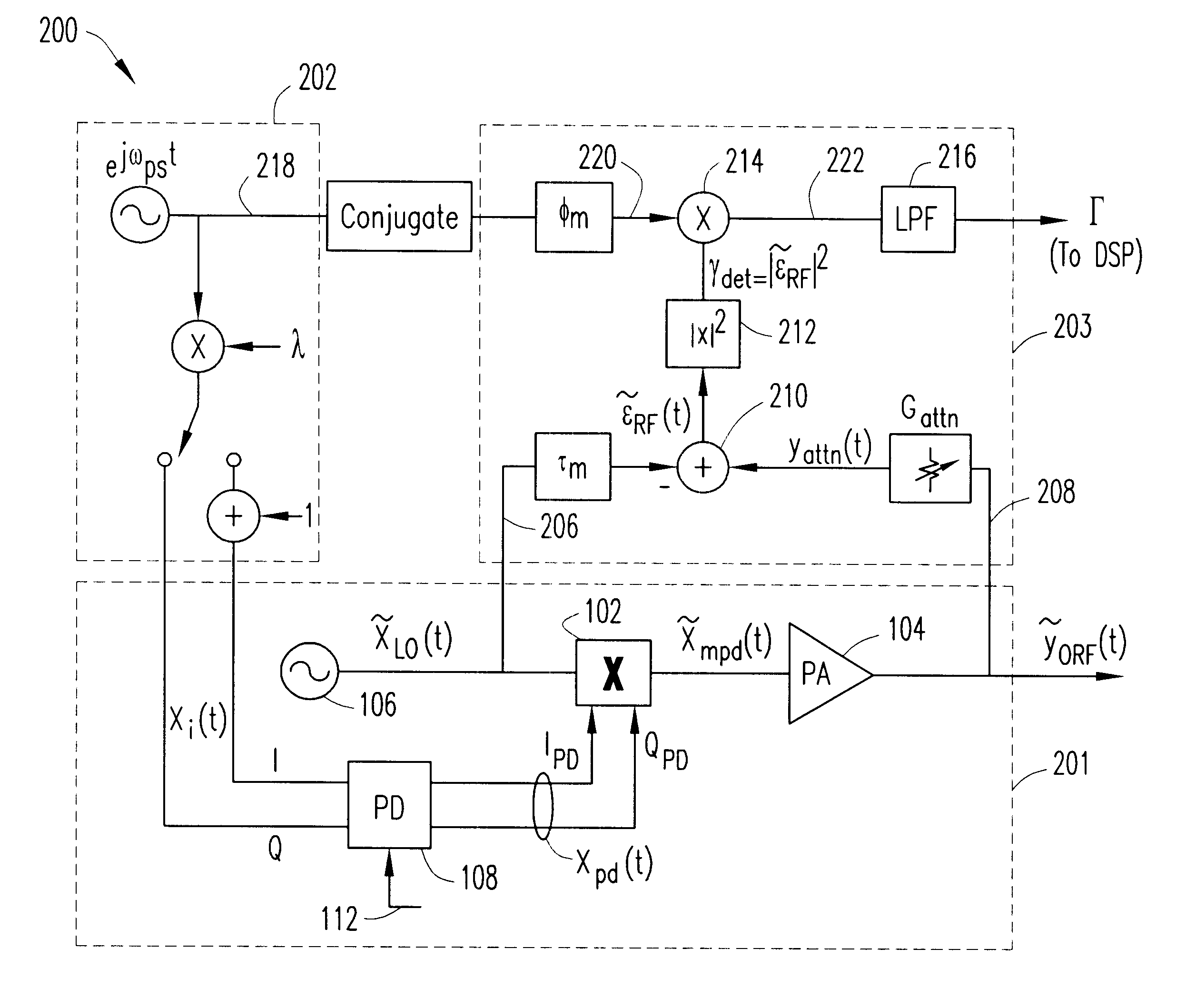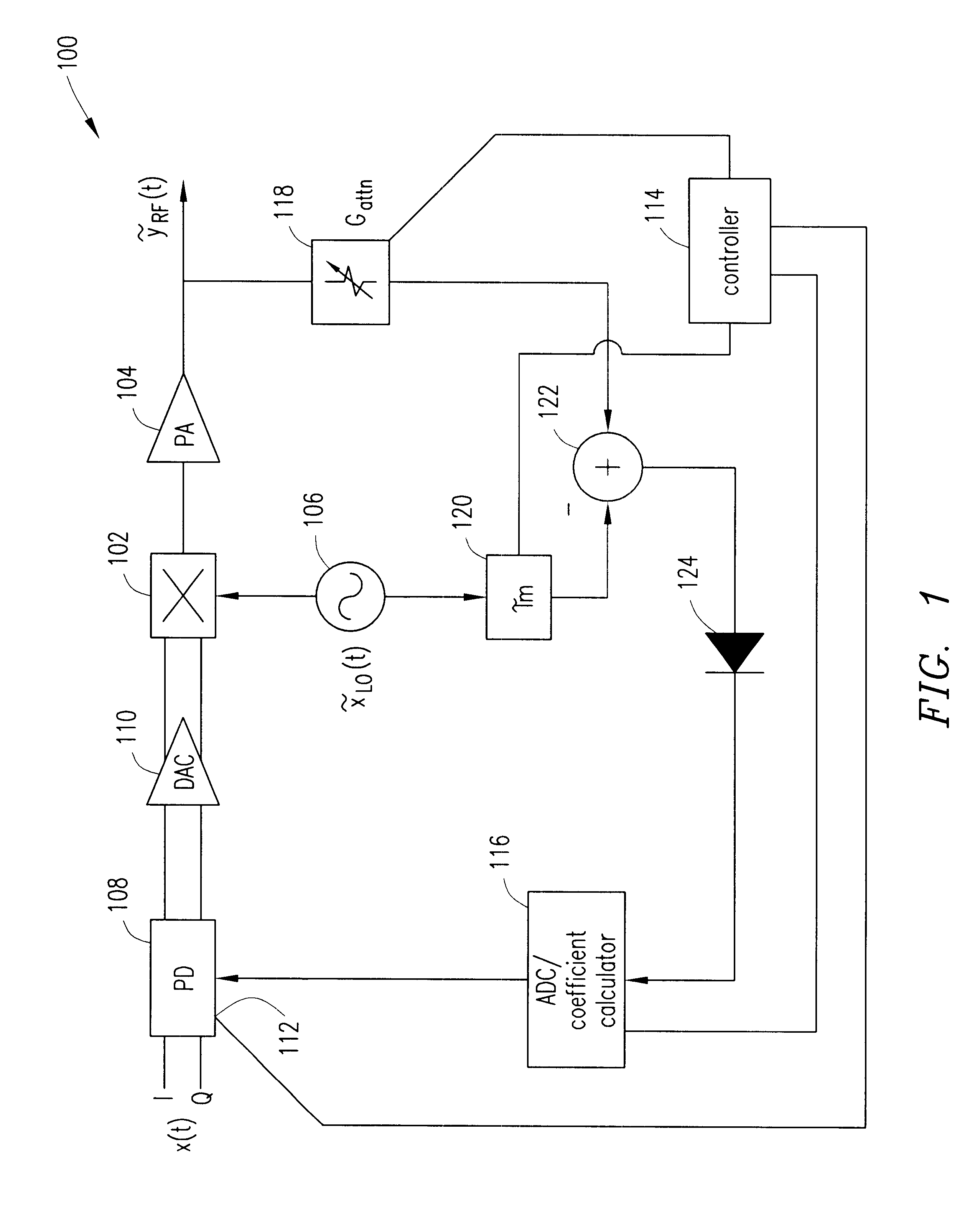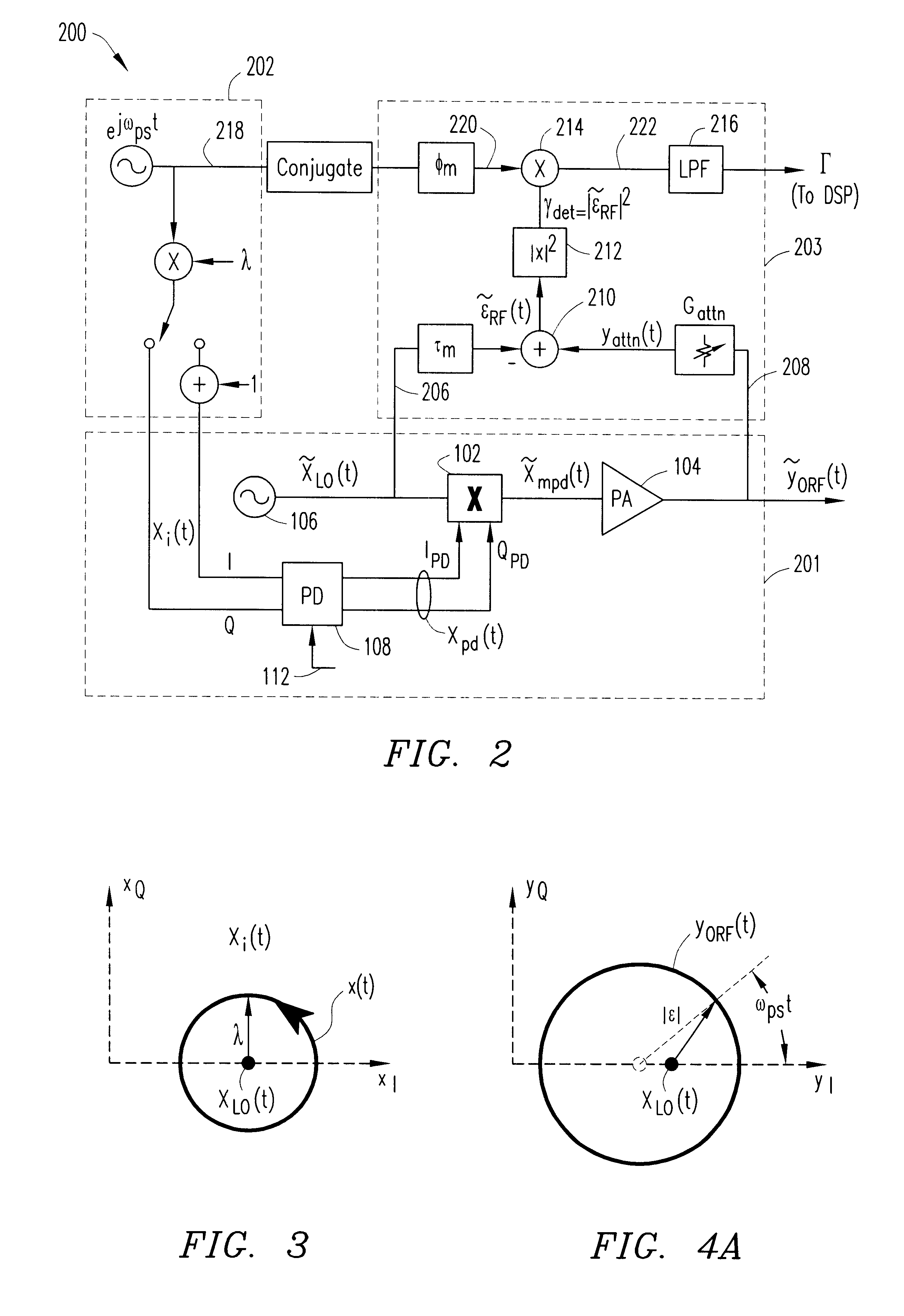Method and system for reducing non-linearities
a nonlinearity and nonlinearity technology, applied in the field of signal generation, can solve the problems of cost and the need for precise balance between reference, modulator errors are not typically corrected, and amplifier modifications to reduce nonlinear distortion
- Summary
- Abstract
- Description
- Claims
- Application Information
AI Technical Summary
Benefits of technology
Problems solved by technology
Method used
Image
Examples
Embodiment Construction
In the following Detailed Description, specific details are set forth in order to provide a thorough understanding of embodiments of the present invention. However, it will be apparent to those of ordinary skill in the art that the present invention can be practiced in other embodiments that depart from these specific details. In other instances, detailed descriptions of well-known methods, devices, logical code (e.g., hardware, software, firmware), and the like are omitted so as not to obscure description of embodiments of the present invention with unnecessary detail. Preferred embodiments of the present invention and its advantages are best understood by referring to FIGS. 1-6 of the Drawings, in which like numerals are used for like and corresponding parts of the various Drawings.
FIG. 1 is a block diagram of a linearization circuit 100 in accordance with teachings of the present invention. The linearization circuit 100, which has a base-band input signal x(t), could be, for exam...
PUM
 Login to View More
Login to View More Abstract
Description
Claims
Application Information
 Login to View More
Login to View More - R&D
- Intellectual Property
- Life Sciences
- Materials
- Tech Scout
- Unparalleled Data Quality
- Higher Quality Content
- 60% Fewer Hallucinations
Browse by: Latest US Patents, China's latest patents, Technical Efficacy Thesaurus, Application Domain, Technology Topic, Popular Technical Reports.
© 2025 PatSnap. All rights reserved.Legal|Privacy policy|Modern Slavery Act Transparency Statement|Sitemap|About US| Contact US: help@patsnap.com



